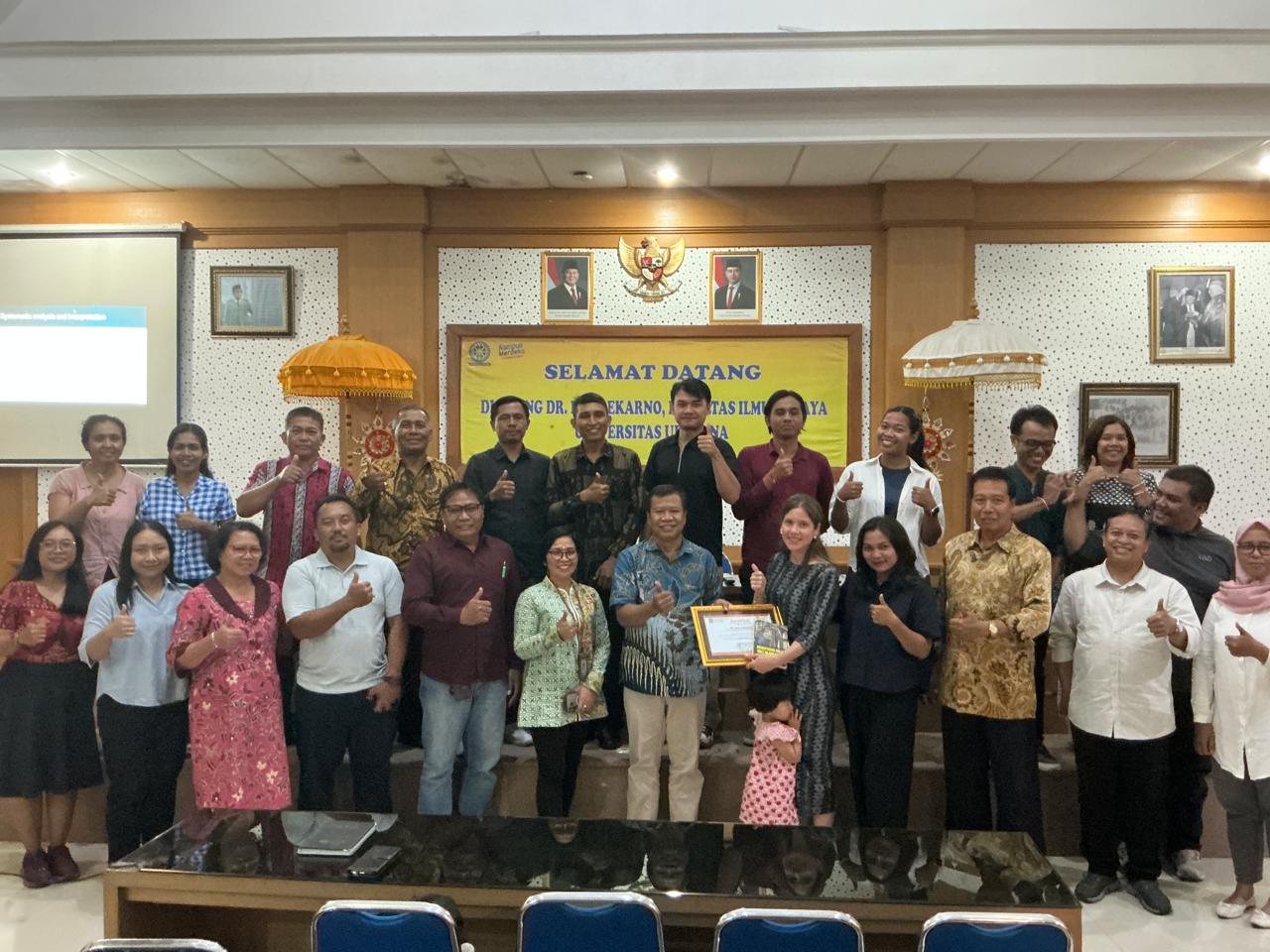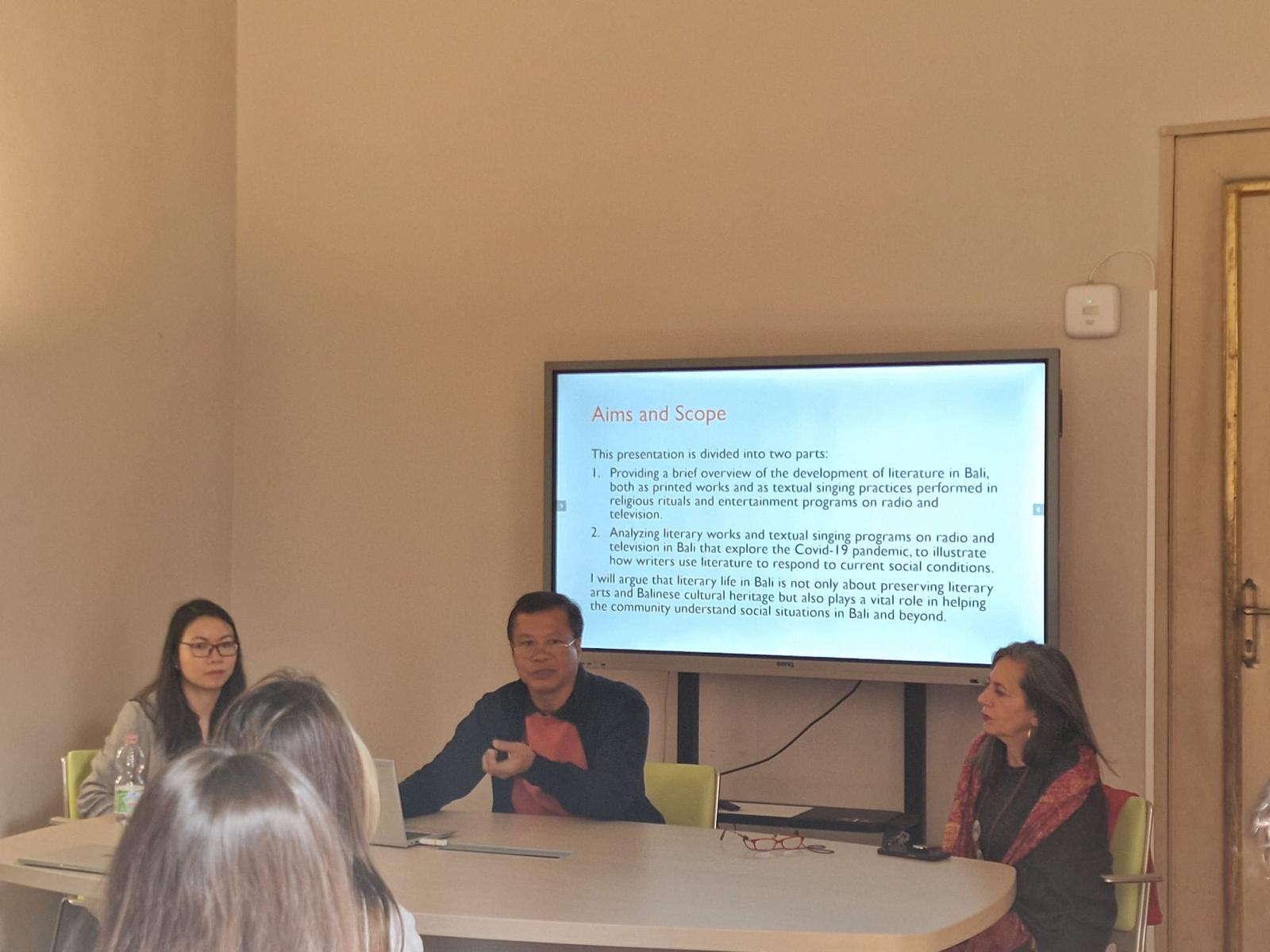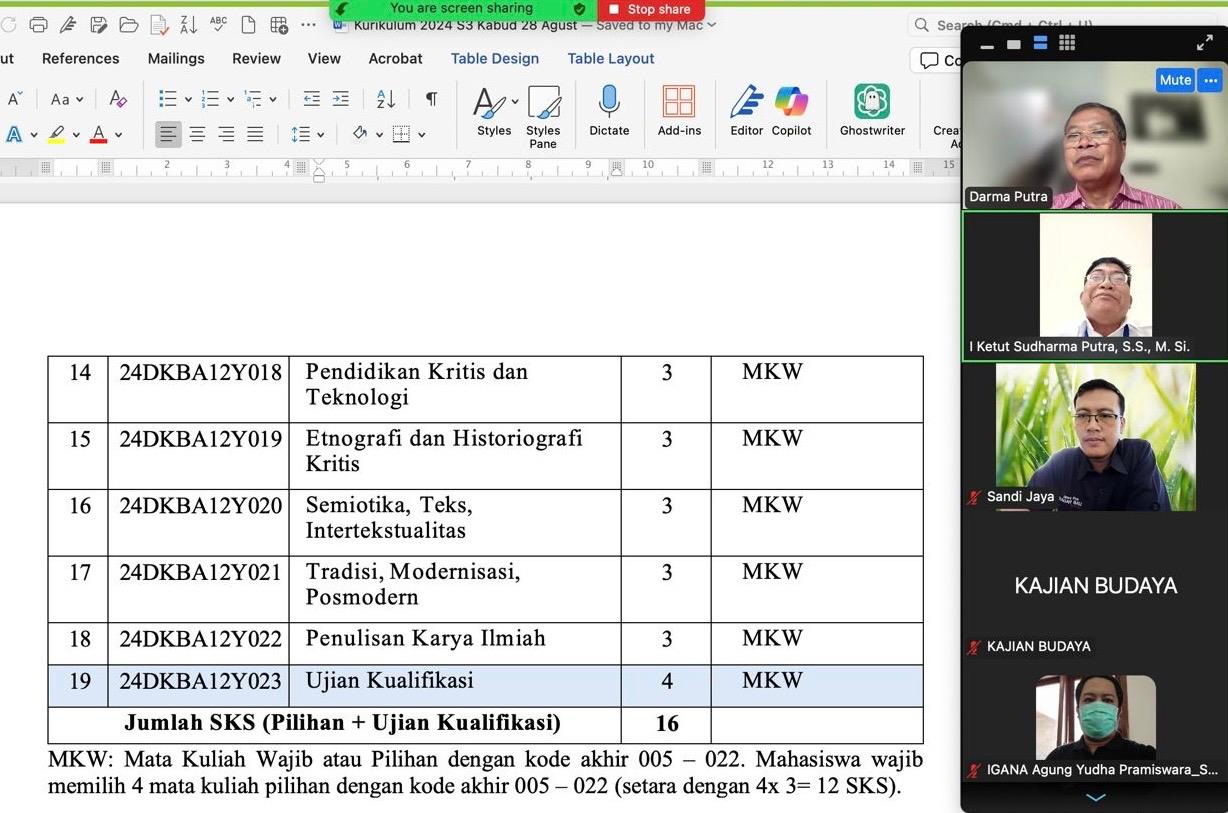Australian Scholar Invited, Doctoral Program in Cultural Studies FIB Udayana Holds Guest Lecture on “Critical Discourse Analysis” in the Indonesian Context
The Doctoral Program in Cultural Studies, Faculty of Humanities, Udayana University, held a guest lecture titled “Critical Discourse Analysis for Beginners in the Indonesian Context.”
The event took place on Friday, April 25, 2025, from 10:00 AM to 12:00 PM WITA, in the Sukarno Room on campus. It was attended by 25 participants consisting of students, lecturers, and members of the public.
The guest lecture featured Dr. Jane Ahlstrand, a lecturer from the University of New England, New South Wales, Australia, who is also the author of Women, Media, and Power in Indonesia (Routledge, 2022).
The event was moderated by I.G.A Andani Pertiwi, a doctoral student in the Cultural Studies program at Udayana University.
In his opening remarks, Prof. I Nyoman Darma Putra, Ph.D., Coordinator of the Doctoral Program in Cultural Studies at FIB Udayana, stated that this guest lecture was intended to broaden students’ understanding of Critical Discourse Analysis (CDA), a widely recognized and highly regarded approach in interdisciplinary research.
“We are pleased to welcome a speaker from Australia who has a strong reputation in CDA theory,” said Darma Putra. He added that Dr. Jane is the author of Women, Media, and Power in Indonesia (2022), and noted her exceptional talent not only as an Indonesian language lecturer in Australia but also as a Balinese dancer.
On this occasion, Dr. Jane Ahlstrand shared insights into the Critical Discourse Analysis (CDA) approach and its relevance within the Indonesian context, especially for early-career researchers.
According to Jane, CDA is a research approach rooted in social motivation and aimed at addressing social problems. Also known as Critical Discourse Studies (CDS), CDA focuses on the intersection of language, power, and ideology in sociopolitical contexts.
“This approach is used by scholars from various disciplines to uncover hidden structures of power and challenge social injustice,” said Jane.
CDA is not merely about analyzing language as a communication tool, but rather seeing language as a form of social practice that mutually shapes and is shaped by social structures. Language, images, body language, and even architecture can all be part of discourse to be analyzed. In this framework, text serves as the object of analysis—an entry point for examining broader social dynamics.
Jane emphasized that being critical in CDA does not mean negative criticism, but rather revealing hidden messages embedded in texts and assessing their societal impact.
The goal is to link linguistic structures with power structures. “For example, the use of certain words in the media can obscure facts or amplify the voices of dominant groups,” she explained.
CDA also focuses on asymmetrical power relations. Power is not only seen as direct dominance but as something institutionalized and reproduced through social and discursive practices. Therefore, CDA researchers often promote democratic values and reject oppressive forms of power.
Jane also highlighted that ideology, as a system of group-based values and beliefs, is a key area of focus. Ideology may reinforce group identities, foster exclusion, and exacerbate inequality. When a dominant ideology becomes normalized and unquestioned, it creates what Antonio Gramsci called hegemony.
“CDA seeks to deconstruct this hegemony and open up space for alternative ideologies, including those from grassroots communities,” she said.
Every discourse must be understood within its social, political, and historical context. CDA emphasizes the importance of context as a basis for interpretation, whether it involves past events or relevant contemporary issues.
As an eclectic approach, CDA is not bound by a single theory or methodology. Researchers are free to design their own analytical tools based on the research objective, such as grammar analysis, metaphor, or narrative structure. Even concepts from outside CDA—like agency, leadership, or public space—can be incorporated to enrich analysis.
The discussion was dynamic, with a wide range of questions raised—including the use of CDA in translation (e.g. novels), song analysis (often politically charged or propagandistic), tourism discourse, medical discourse in public health, and politics.
In response to the question about applying CDA to song analysis, Jane suggested combining it with ethnography, exploring production and consumption, then analyzing the lyrics. “Songs are like poems that need to be interpreted,” she said.
Regarding a question on whether power analysis in CDA is merely a matter of perspective, Jane explained that CDA involves identifying patterns of representation and connections from linguistic evidence, such as negotiation and the impact of language use for the purposes of gaining or maintaining power.
“Indeed, everything stems from a point of view,” she added.
This guest lecture was part of the academic series celebrating the 24th anniversary of the Doctoral Program in Cultural Studies at Udayana University (11 July 2001–2025).
Embracing the spirit of Highly Deeply Cultural Studies, this event aimed to strengthen critical understanding of discourse and the embedded power relations, while enriching academic discourse in the field of cultural studies in Indonesia.



FACULTY OF HUMANITIES UDAYANA UNIVERSITY